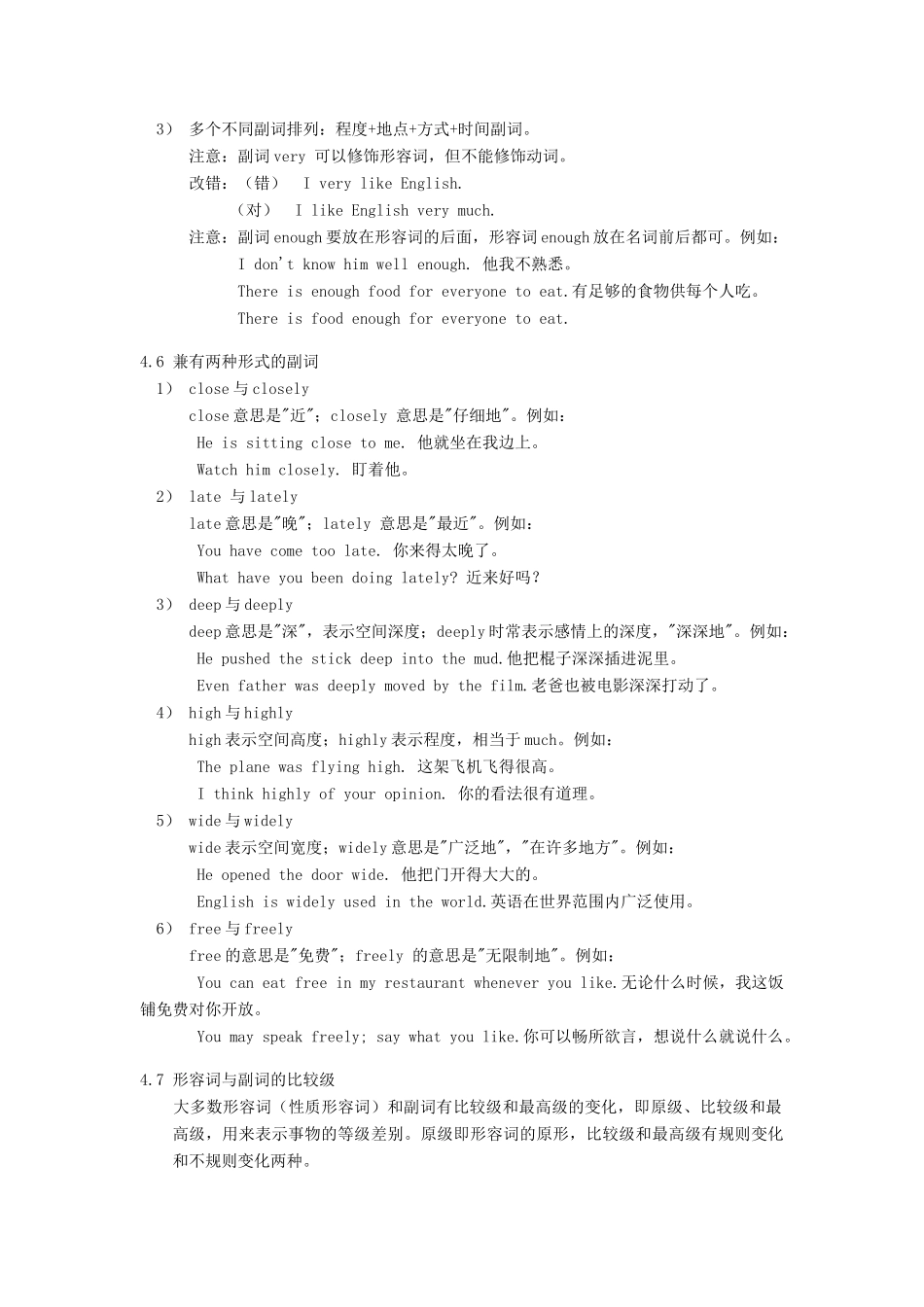高三英语复习与训练四——形容词和副词4. 形容词和副词 4.1 形容词及其用法 形容词修饰名词,说明事物或人的性质或特征。通常,可将形容词分成性质形容词和叙述形容词两类,其位置不一定都放在名词前面。1)直接说明事物的性质或特征的形容词是性质形容词,它有级的变化,可以用程度副词修饰,在句中可作定语、表语和补语。例如:hot。2)叙述形容词只能作表语,所以又称为表语形容词。这类形容词没有级的变化,也不可用程度副词修饰。大多数以 a 开头的形容词都属于这一类。例如:afraid 害怕的。 (错) He is an ill man. (对) The man is ill. (错) She is an afraid girl. (对) The girl is afraid. 这类词还有: well,unwell,ill,faint,afraid,alike,alive,alone,asleep,awake 等。3)形容词作定语修饰名词时,要放在名词的前边。但是如果形容词修饰以-thing 为字尾的词语时,要放在这些词之后。例如:something nice. 4.2 以-ly 结尾的形容词 1) 大部分形容词加-ly可构成副词。但 friendly,deadly,lovely,lonely,likely,lively,ugly,brotherly,仍为形容词。 改错: (错) She sang lovely. (错) He spoke to me very friendly. (对) Her singing was lovely. (对) He spoke to me in a very friendly way.2)有些以-ly 结尾既为形容词,也为副词,如 daily,weekly,monthly,yearly,early等。例如: The Times is a weekly paper. 《时代周刊》为周刊。 The Times is published weekly. 《时代周刊》每周发行一期。 4.3 用形容词表示类别和整体 1) 某些形容词加上定冠词可以泛指一类人,与谓语动词的复数连接,如 the dead,the living,the rich,the poor,the blind,the hungry 等。例如: The poor are losing hope. 穷人行将失去希望。2) 有关国家和民族的形容词加上定冠词指这个民族的整体,与动词的复数连用,如 the British,the English,the French,the Chinese 等。例如: The English have wonderful sense of humor. 英国人颇有幽默感。 4.4 多个形容词修饰名词的顺序 多个形容词修饰名词时,其顺序为:限定词--数词--描绘词--(大小,长短,形状,新旧,颜色)--出处--材料性质--类别--名词。例如: a small round table/ a tall gray building/ a ...


